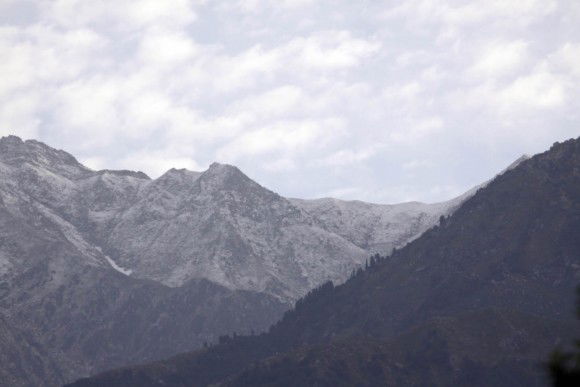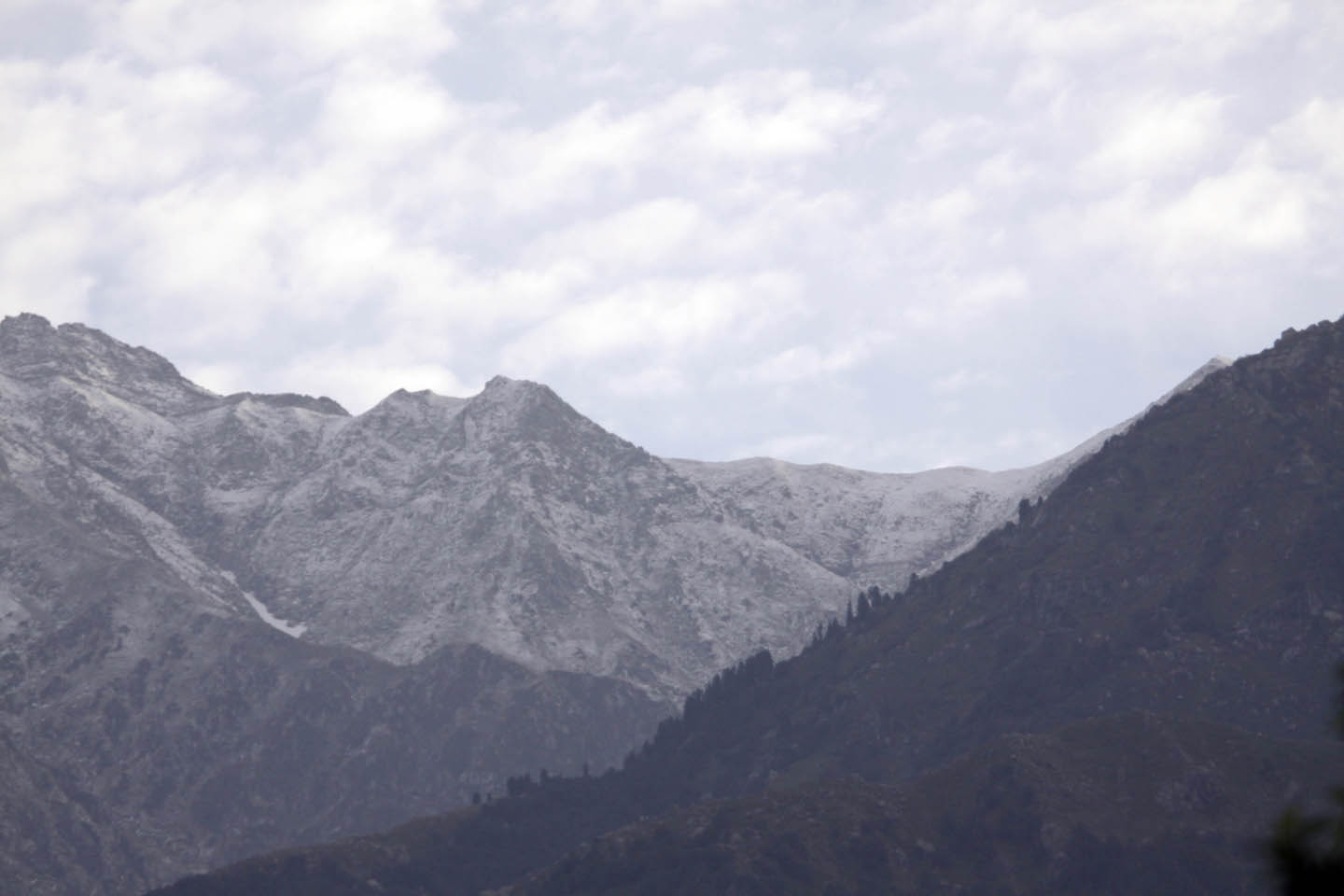Articles features
Five degree mercury rise in Hindu Kush by 2050, warn experts

New Delhi, Dec 11
Temperatures across the Hindu Kush, a mountain range extending west of the Himalayas, will increase by about one to two degrees Celsius, in some places by four to five degrees, in the next 35 years, international researchers said on Friday.
They warned that extreme rainfall events are becoming less frequent but more violent and are likely to increase in intensity.
These startling facts came to light in a climate and water atlas, "Mapping an uncertain future: Atlas of climate change and water in five crucial water basins in the Hindu Kush Himalayas", published by three international institutes.
They are the International Centre for Integrated Mountain Development (ICIMOD), GRID-Arendal, a Norwegian Foundation, and the Centre for International Climate and Environmental Research-Oslo (CICERO).
The first-of-its-kind atlas offers a comprehensive, regional understanding of the changing climate and its impact on water resources in five of the major river basins - the Indus, the Brahmaputra, the Ganges, the Salween and the Mekong.
The atlas was released jointly by the research institutes on the sidelines of the Paris COP-21 to mark International Mountain Day on Friday.
"This atlas sheds light on the state and fate of the water resources of the Hindu Kush Himalayas, a region that is highly vulnerable to climate change and one of the poorest regions in the world," Kathmandu-based ICIMOD director general David Molden told IANS in an email.
The information in the atlas presents science-based information that will help develop solutions and take the necessary action to deal with changes in the region, he added.
It uses maps and info graphics to show how the region's climate is changing now and into the future, with severe consequences for populations - both local and downstream.
Increased temperatures by 2050 will not only increase the rates of snow and ice melt but can also result in a change of precipitation, with the main loss in the Indus basin. Communities living immediately downstream from the glaciers are the most vulnerable to glacial changes.
The Hindu Kush Himalayan region is home to 210 million people and providing water to over 1.3 billion people - more than the entire continent of Europe.
Precipitation will change with the monsoon expected to become longer and more erratic, said the researchers.
Despite the overall greater river flow projected, higher variability in river flows and more water in pre-monsoon months are expected, which will lead to a higher incidence of unexpected floods and droughts, greatly impacting on the livelihood security and agriculture of river-dependent people, they said.
Changes in temperature and precipitation will have serious and far-reaching consequences for climate-dependent sectors, such as agriculture, water resources and health.
The atlas stresses on development of flexible and cooperative strategies among countries to meet the challenges posed by either too much or too little water.
(Vishal Gulati can be contacted at vishal.g@ians.in)
They warned that extreme rainfall events are becoming less frequent but more violent and are likely to increase in intensity.
These startling facts came to light in a climate and water atlas, "Mapping an uncertain future: Atlas of climate change and water in five crucial water basins in the Hindu Kush Himalayas", published by three international institutes.
They are the International Centre for Integrated Mountain Development (ICIMOD), GRID-Arendal, a Norwegian Foundation, and the Centre for International Climate and Environmental Research-Oslo (CICERO).
The first-of-its-kind atlas offers a comprehensive, regional understanding of the changing climate and its impact on water resources in five of the major river basins - the Indus, the Brahmaputra, the Ganges, the Salween and the Mekong.
The atlas was released jointly by the research institutes on the sidelines of the Paris COP-21 to mark International Mountain Day on Friday.
"This atlas sheds light on the state and fate of the water resources of the Hindu Kush Himalayas, a region that is highly vulnerable to climate change and one of the poorest regions in the world," Kathmandu-based ICIMOD director general David Molden told IANS in an email.
The information in the atlas presents science-based information that will help develop solutions and take the necessary action to deal with changes in the region, he added.
It uses maps and info graphics to show how the region's climate is changing now and into the future, with severe consequences for populations - both local and downstream.
Increased temperatures by 2050 will not only increase the rates of snow and ice melt but can also result in a change of precipitation, with the main loss in the Indus basin. Communities living immediately downstream from the glaciers are the most vulnerable to glacial changes.
The Hindu Kush Himalayan region is home to 210 million people and providing water to over 1.3 billion people - more than the entire continent of Europe.
Precipitation will change with the monsoon expected to become longer and more erratic, said the researchers.
Despite the overall greater river flow projected, higher variability in river flows and more water in pre-monsoon months are expected, which will lead to a higher incidence of unexpected floods and droughts, greatly impacting on the livelihood security and agriculture of river-dependent people, they said.
Changes in temperature and precipitation will have serious and far-reaching consequences for climate-dependent sectors, such as agriculture, water resources and health.
The atlas stresses on development of flexible and cooperative strategies among countries to meet the challenges posed by either too much or too little water.
(Vishal Gulati can be contacted at vishal.g@ians.in)


5 hours ago
NAMAM organized vibrant and unforgettable festival, a true feast for the senses.

8 hours ago
'Go get me my phone': Hegseth recalls Trump's 'FAFO' moment after US strikes on Iran's nuclear sites

8 hours ago
Patna-born doctor Anjani Sinha takes charge as US Envoy to Singapore

10 hours ago
Trump endorses candidate for Governor of Ohio Ramaswamy

10 hours ago
Indian Consulate in Seattle hosts Pre-Event Briefing Session ahead of AI INDIA Impact Summit 2026

14 hours ago
Isha Koppikar says 'Miss you deeply, Aunty Zarine' as she remembers Sussanne Khan's mother

14 hours ago
Letting my bike Dyna go was one of the hardest losses of my life, says actor Gautham Karthik

14 hours ago
Arjun Rampal enchants with his menace avatar as the Angel of Death in 'Dhurandhar'

14 hours ago
Malaika Arora calls working on Yo Yo Honey Singh’s Chillgum 'an absolute blast'

14 hours ago
Vivek Agnihotri’s ‘The Bengal Files’ to premiere digitally on November 21

14 hours ago
Actor Arun Vijay’s 'Retta Thala' to hit screens on December 18

14 hours ago
India seeks equitable climate action at CoP30 summit in Brazil

14 hours ago
PM Modi to flag off Ernakulam–KSR Bengaluru Vande Bharat through video conferencing today






















